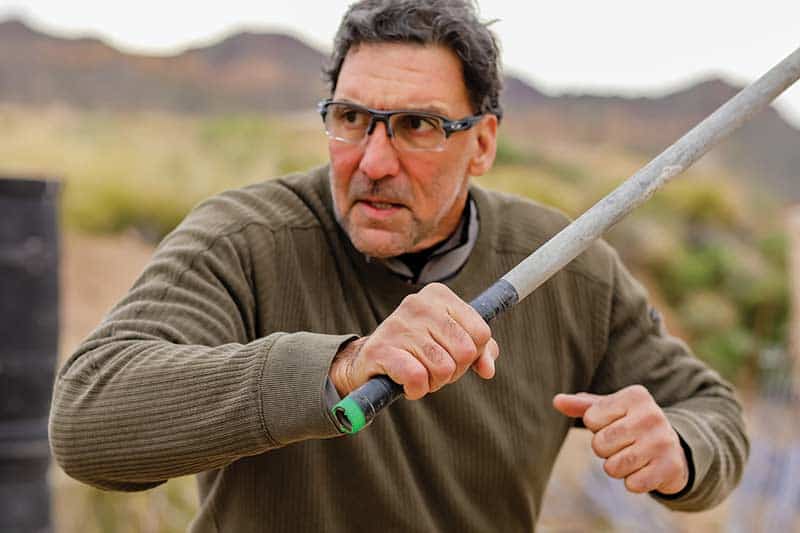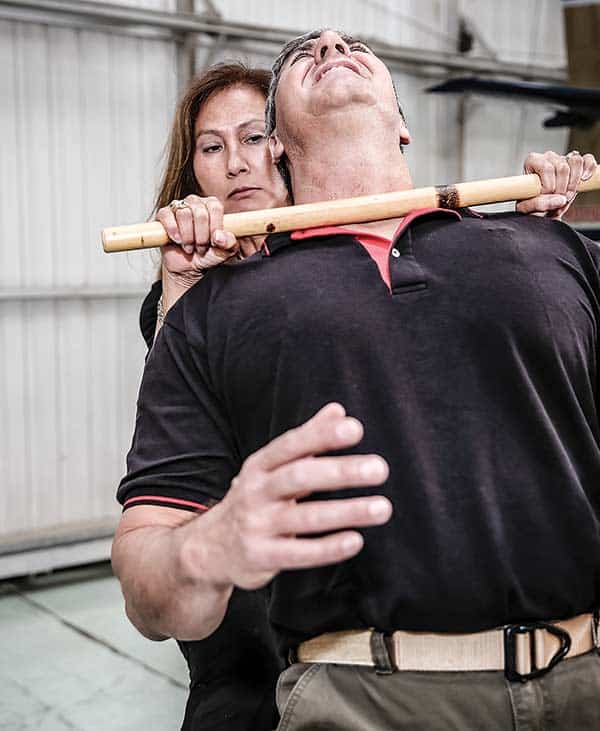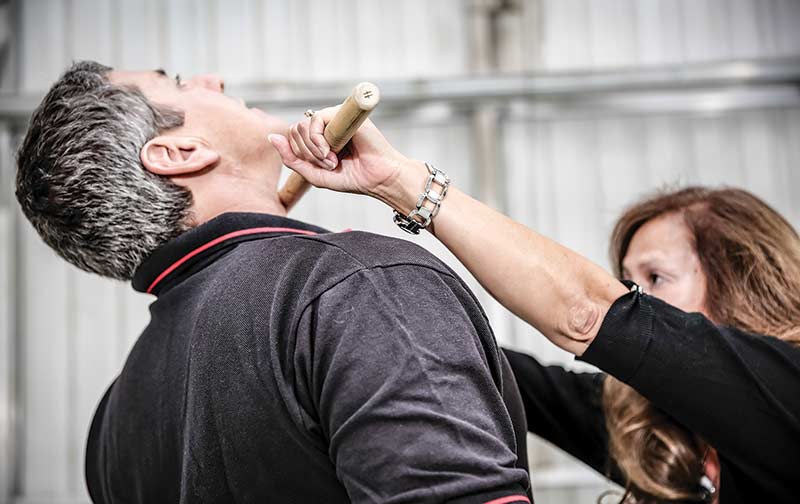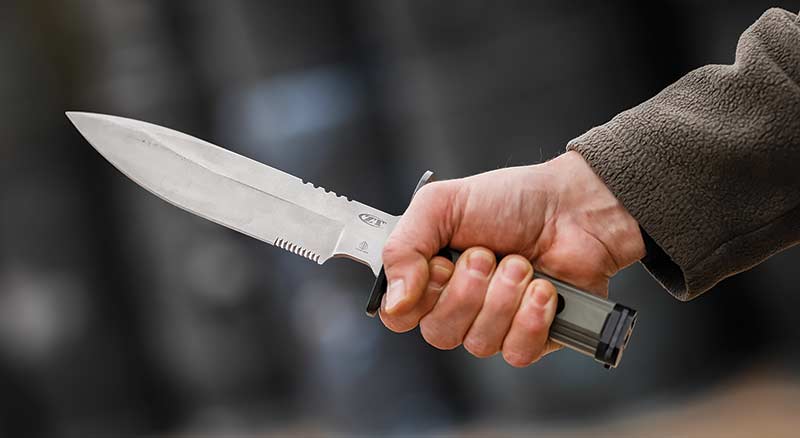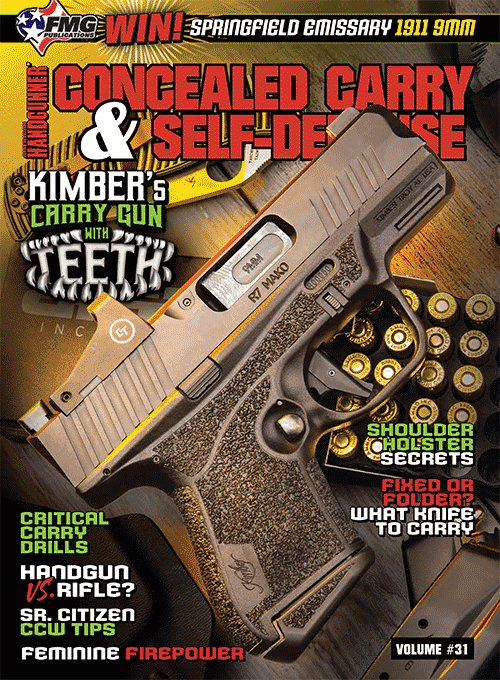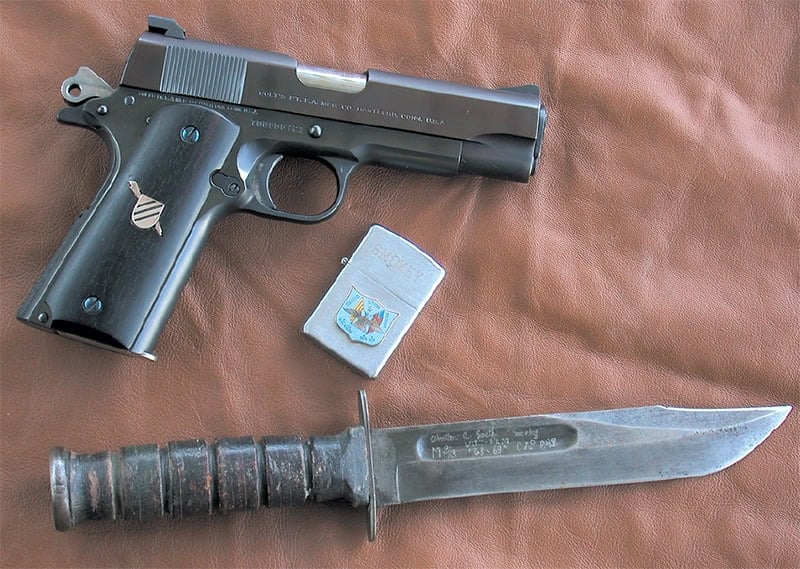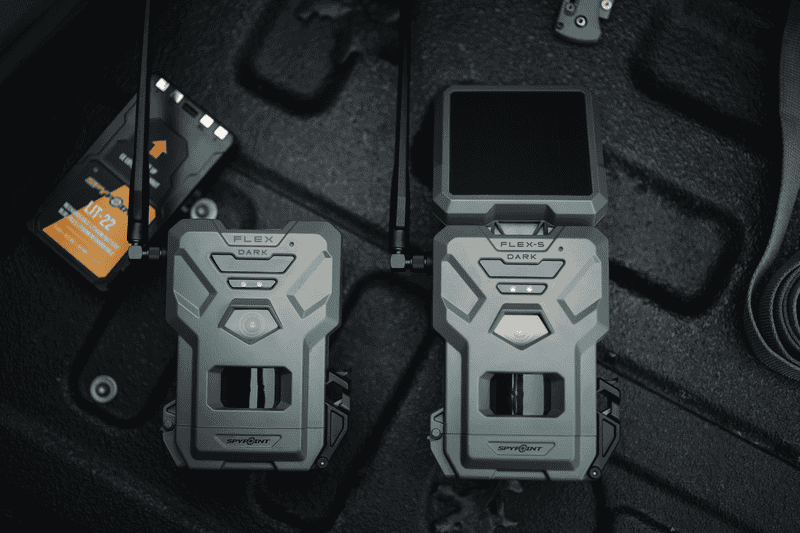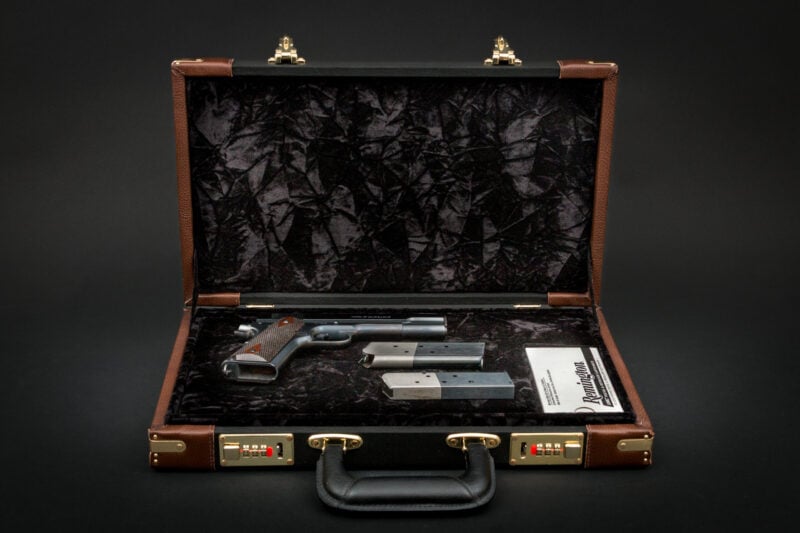House of Defensive Horrors
Using Weapons of Opportunity
In facing today’s challenges of increased crime, movements to defund police, border crisis and other events directly impacting community safety, it is incumbent upon concerned citizens of a free republic to remain informed and prepared. Carrying a firearm for personal defense should most certainly be part of any protection plan. However, what might be alternative solutions for those very realistic conditions where you cannot go to guns?
There are situations where a gun is not the lifesaving tool of choice to solve the tactical problem.
One is you can’t bring a gun. Government buildings, courthouses, airports, schools, hospitals, posted places of business, worship and the like are locations where you are not allowed to carry.
Another is a no-shoot situation. You may end up in a real-world scenario where you can’t get to your gun in time or make the shot. Consider an immediate edged-weapon attack from less than arm’s-length distance. You have less than a one-second response time to clear your cover garment, ensure your backstop and try to stop the threat. Or maybe you can get your hand on your concealed holstered pistol, but there’s no clear shot. Now what?
Exigent circumstances may dictate yet a third situation where you may be standing in the shower or in your kitchen without anything strapped to your body or within arm’s reach.
Regardless of situation or condition, you still need a solution to the problem. If it’s not a firearm, then what is the next best use-of-force option? Weapons of opportunity.
Improvised Weapons
Weapons of opportunity are any physical handheld object you can readily access and deploy in such a manner as to defend against a clear and present danger where you believe life or limb may be threatened. Also referred to as improvised weapons, these are such objects as a frying pan, broomstick handle, purse strap, ball-point pen, pair of scissors or a broken piece of glass.
Unlike firearms, weapons of opportunity are non-ballistic weapons and, by their nature, are considered immediate close-quarter contact tools. The reason you need one is you don’t have, or can’t use, your gun and you have found yourself behind the action-reaction power curve.
Categories
When it comes to self-defense against one or more attackers, it’s always best to have something in your hands as opposed to having nothing in your hands. Weapons of opportunity are available in three categories: edged weapons, impact weapons and flexible weapons.
Examples of improvised edged weapons include a pair of scissors, a kitchen knife, a ballpoint pen, a ruler, a broken piece of glass, a sharp piece of scrap metal, a broken piece of wood and the like. Anything with a sharp edge or pointy tip you can hold in your hand capable of lacerating or puncturing human flesh will meet the requirement. A flathead screwdriver buried deeply into the left eye socket would be an example of stopping or slowing a threat with an improvised edged weapon.
The second category of weapons of opportunity is impact devices. Consider a hammer, baseball bat, frying pan, tire iron, tree branch, rock, crowbar, rolling pin, steel coffee thermos and the like. Any blunt object rigid enough to sustain considerable impact you can hold in your hand capable of crushing human bone or otherwise structurally damaging the human body will meet the requirement. A common carpenter’s hammer repeatedly applied to the brain box of an assailant would be an example of stopping or slowing a threat with an impact weapon.
Last, but certainly not least, is the remaining weapons of opportunity category — flexible weapons. Ranging from a trashcan liner to a belt, to a silk scarf, to a necktie, to a purse strap or even a dishtowel are examples of flexible weapons that can be used in self-defense. What was the primary form of execution in the U.S. up until the turn of the 20th century? “He shall hang by the neck until dead!” The rope is a flexible weapon.
If you’ve ever seen movies like The Bourne Identity or The Accountant where the hero uses a bathroom towel or their belt to disable a violent physical threat, you’ve seen a flexible weapon in action.
Weapons of opportunity are a big part of martial arts. The Filipino Martial Arts (FMA) train in all three categories. There is a martial art practiced in Indonesia specializing in both impact and flexible weapon defense.
Akin to a firearm where it behooves the owner to become proficient with gun safety, gun handling and marksmanship, the same applies to weapons of opportunity. You can attend a workshop, weekend seminar or even look online for introductory training videos. Try to find a training partner or even your spouse or family member to at least learn the very basics. As with any weapon system, there are fundamentals to using improvised weapons in self-defense. These include mindset, weapon selection and application.
Mindset
When approaching the subject of improvised weapons, there are a number of government agencies out there that may or may not have a division of clandestine operations. Hypothetically speaking, should there be any employees of such organizations (that may possibly exist) who are trained to operate in high-threat environments without access to a firearm, such personnel would approach the situation from a position of supreme diplomacy. Be professional, be polite and be ready to drop anyone you meet who poses a violent physical threat. By adopting this mindset, you stay ahead of the action-reaction power curve by expecting the unexpected.
Weapon Selection
When walking into a meeting, attending a dinner party or even entering a restaurant, a method of weapon selection, hypothetically referred to within the clandestine operations community (if there is such a thing) as a “resource assessment listing,” is employed to identify all weapons of opportunity within arm’s reach.
First, visually identify weapons of opportunity by category. Look for readily accessible edged weapons, impact weapons and flexible weapons. After identifying category, next is proximity. Which category is closest to you? Edged? Impact? Is the flexible weapon close enough to rapidly deploy?
Upon selection of weapon and proximity, you then physically place yourself well within arm’s reach between the potential threat and the weapon of opportunity. If it hits the fan, you can react effectively at a moment’s notice from this advantageous physical position.
Application
Weapons of opportunity are not designed for you to stand your ground during the zombie apocalypse. If you are with your family or a protectee (someone for whose safety you may be responsible) then your highest priority is not to “stay and play” with one or more opponents, but to get yourself and your protectee(s) off that “X” and to a safer place. Weapons of opportunity can be applied to help you accomplish this critical objective.
The overall combative concept when applying weapons of opportunity is simply “Exit or Equalize.” What this means is a moving target is always more difficult to hit than a stationary target, so immediately move away from the threat area (exit). If you cannot, for whatever reason, immediately move, then just as quickly get something in your hands you can defend yourself with (equalize) until such time you can find a way out.
Weapons of opportunity provide an alternative use of force should you not have or be unable to deploy a firearm. Knowing what they are, their capabilities, how to select them and how they are used can give you the tactical advantage where you may otherwise have none.
Subscribe To American Handgunner

Get More Personal Defense Tips!
Sign up for the Personal Defense newsletter here:

